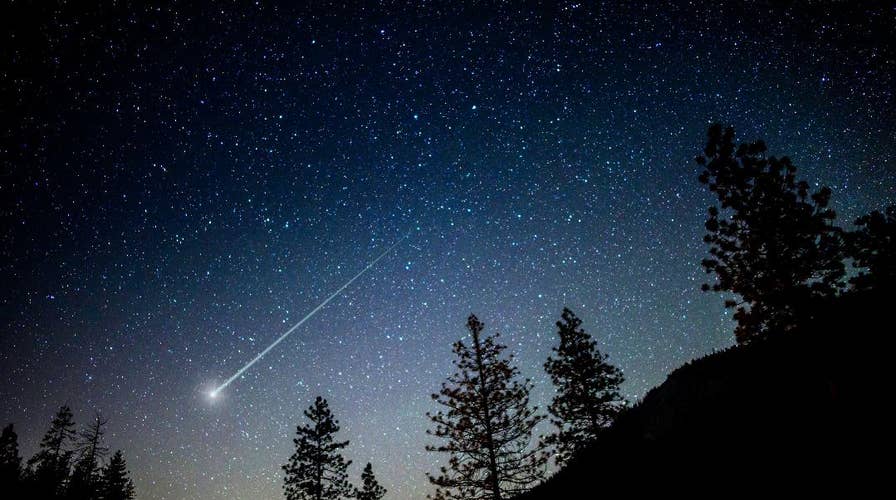Must-see video: Meteor lights up Michigan sky
Michigan residents were perplexed when a falling meteor lit up the night sky. These must-see videos captured the exact moment you have to see to believe.
Meteorite hunters have found the first pieces of the fireball that streaked across the sky in Michigan this week.
Accompanied by a flash and a sound like thunder, the space rock entered Earth’s atmosphere northwest of Detroit on Tuesday night. Based on information from NASA, researchers are now looking for rare pieces of meteorite in the area of Hamburg Township in the southeastern part of the state.
Some fragments of the 6-foot-wide rock have already been spotted, according to reports.
“We are happy and excited to report, two meteorites from the Jan 16th fall have been found in Michigan today. Congratulations to Robert Ward and Larry Atkins on the first two reported finds,” the American Meteor Society tweeted Thursday.
The Detroit Free Press reports that Ward found three meteorites in less than four hours on a frozen lake at Hamburg Township. The first meteorite found was reportedly the size of a pecan, with the third about the size of a walnut.
'POTENTIALLY HAZARDOUS ASTEROID' BIGGER THAN EARTH'S TALLEST BUILDING WILL ZOOM PAST US NEXT MONTH
NASA reports that the meteoroid entered Earth’s atmosphere above the southeastern part of Michigan, just to the northwest of Detroit. “The fireball was so bright that it was seen through clouds by our meteor camera located at Oberlin college in Ohio, about 120 miles away,” explained NASA’s Meteor Watch, in a Facebook post.
A meteoroid is a small chunk of asteroid or comet. When it enters Earth's atmosphere it becomes a meteor or fireball or shooting star. The pieces of rock that hit the ground, valuable to collectors, are meteorites. The Michigan meteor has been defined as a "superbolide," or particularly bright meteor.
NASA estimates that the meteor was travelling at 36,000 mph. "We have discovered that this meteor travelled almost straight down through the atmosphere, which is unusual for a meteorite dropper - the entry angle was only 21 degrees from the vertical," it explained, on Facebook. "The peak brightness of the fireball has been measured to be magnitude -17, which is the lower limit for a superbolide (Full Moon is magnitude -12 and the Sun is magnitude -27)."
The Michigan rock was too small to be tracked. It exploded in the air with the power of 100 tons of TNT, said Bill Cooke of NASA's Meteoroid Environment Office.
NASA TEST FIRES ROCKET ENGINE WITH 3D-PRINTED 'SHOCK ABSORBER' FOR DEEP SPACE MISSIONS
Such was the power of the meteor that it measured 2.0 on the U.S. Geological Survey’s seismic monitors.
The American Meteor Society received hundreds of reports of a fireball Tuesday night over the state, including many in the Detroit area. Reports also came in from several other states and Ontario, Canada.
Depending on their size and material, meteorites can be lucrative finds. “Because meteorites are so scarce, they are priced and sold by the gram,” explains the Meteorlab website.
Common iron meteorite prices are generally between 50 cents and $5 per gram, according to Meteorlab. Stone meteorites, however, are much scarcer and priced between $2 and $20 per gram. A type of stony-iron meteorite called a pallasite is of the greatest interest to private collectors, according to Geology.com.
The Associated Press contributed to this article.
Follow James Rogers on Twitter @jamesjrogers





















